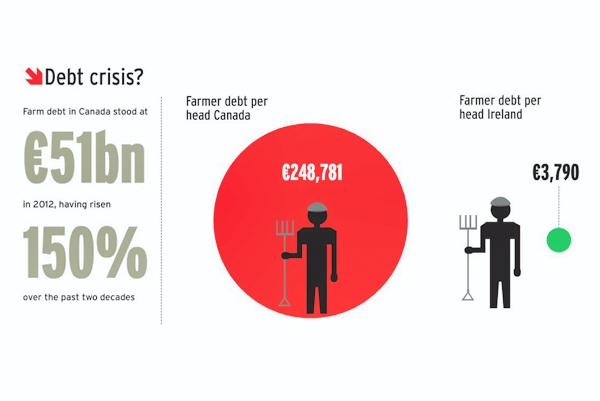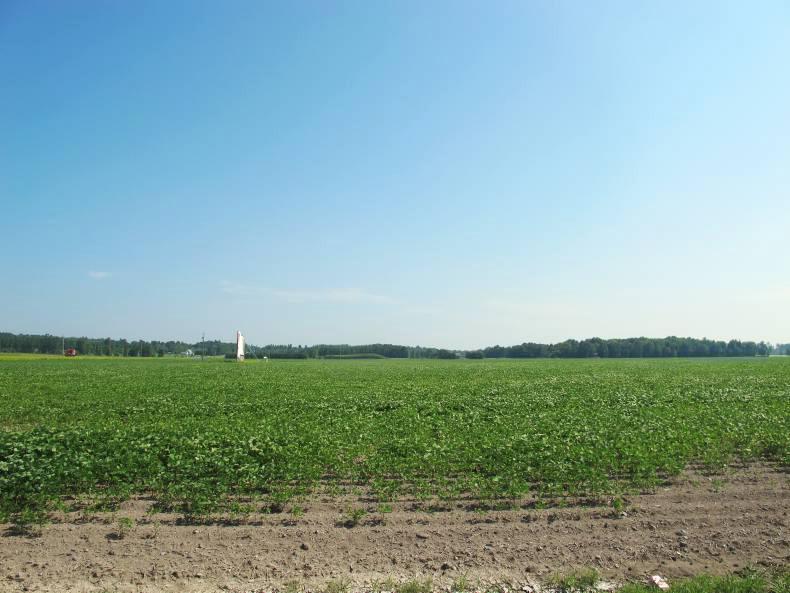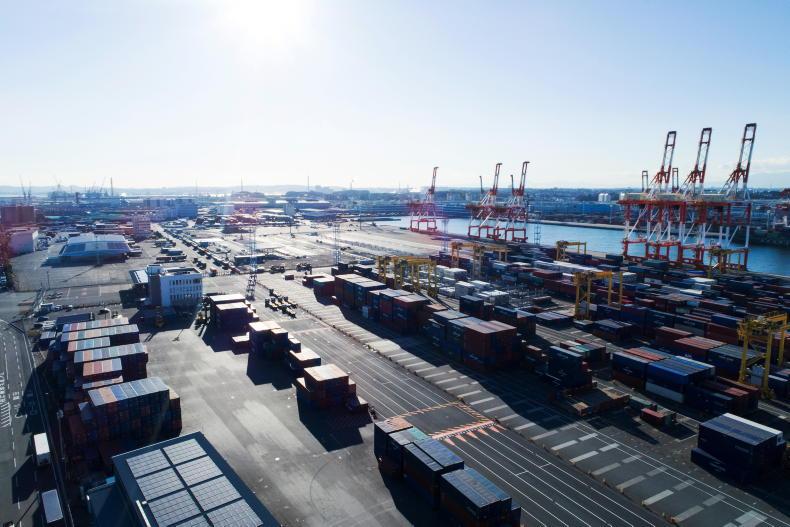However, behind this opulent picture, increasing debts levels are worrying most in the sector.
Canada for many is a great unknown. It is the second largest country in the world in terms of land area but, with a modest population of 35m (90% of the population live within 100 miles of the border with the United States), it has a population density of less than four people per kilometre.
This means there are swathes of land from Vancouver in the west to Toronto in the east perfect for expansive, productive farming.
There are more than 2m people employed in the overall agri-food sector, with 205,000 specific farmers and farmhands. Farming is a vital aspect of the Canadian economy. It contributes over $100bn to the country every year, which amounts to about 10% of it’s entire economic activity.
However, despite the intensive productive farming that is carried out in most states and strong prices paid to tillage, dairy and beef farmers, rising debt levels are a major concern.

Canadian farm debt levels have risen 150% in the past two decades and figures from Statistics Canada (equivalent of the CSO) show another record debt level in 2012 of more than $70bn (€51bn). According to the Central Bank of Ireland, farm debt in Ireland for last year was €530m.
David Rinehart, director of agribusiness for financial market analysts BMO, said it is a major concern. “Without question, debt is escalating and will continue to escalate in the sector,” he said.
One of the most expensive sectors in Canada is dairying. Entry into the sector is tough. Unless a young farmer is lucky enough to gain entry into the sector through an annual graduate programme – only open to a dozen farmers in each state – the only way to join the other 12,000 dairy farmers in Canada is to buy a quota.
The quota system is called supply management and it ensures a high price is paid to farmers for their milk (between €0.50/l and €0.57/l) by building high tariff walls that make importing dairy produce commercially unviable. Farmers supply milk to the Canadian Dairy Commission, who in turn supply to retailers across the country.
The high price paid to farmers does not result in high prices in the shop, with a litre of milk costing just over a dollar. At the start of the year, the Commission negotiates and sets a price with retailers which guarantee a price for the rest of the year.
Surprising
One of the most surprising aspects of farming in Canada is the lack of independent technical advice. They have no equivalent to the ICBF, which means many farmers are breeding blind resulting from the lack independent research. With the huge levels of money tied up in dairying, it is the equivalent of Irish farming 40 years ago but with modern financing.













SHARING OPTIONS